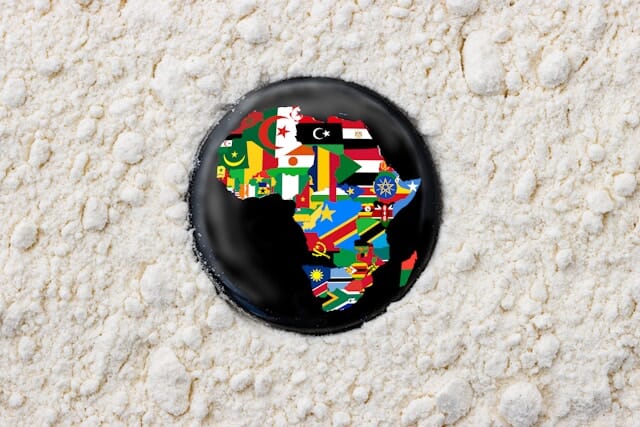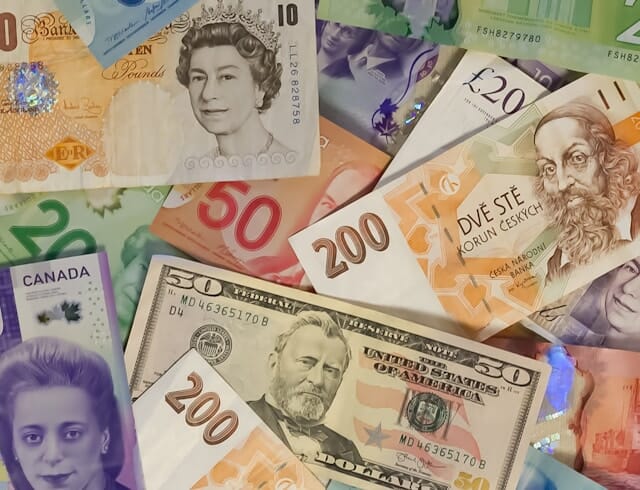As we move through 2025, African economies are navigating a complex landscape of global financial challenges, with many nations relying on the International Monetary Fund (IMF) for support. IMF loans are often a lifeline for countries facing economic crises, helping to stabilize budgets, boost foreign reserves, and address external shocks like pandemics or commodity price swings. However, these loans come with hefty responsibilities—strict policy conditions, austerity measures, and long-term repayment burdens that can strain national economies and spark public discontent.
In June 2025, African countries account for a significant portion of global IMF debt, with 47 of the 91 nations worldwide owing funds to the IMF. This blog post dives into the top 10 African countries with the highest IMF debt as of June 2025, based on data from the IMF and insights from sources like Business Insider Africa. We’ll explore why these debts exist, their economic and social impacts, and what they mean for the continent’s future. From Egypt’s massive obligations to Ghana’s austerity struggles, let’s unpack the numbers and the stories behind them.
Top 10 African countries with the highest IMF debt in June 2025
1. Egypt
IMF Debt: ~ $8.5 billionEgypt tops the list as Africa’s most indebted nation to the IMF, with an outstanding debt of approximately $8.5 billion in June 2025. The country’s economic challenges—currency devaluation, high inflation, and reduced Suez Canal revenues due to global disruptions like COVID-19 and regional conflicts—have driven its reliance on IMF support. In 2024, Egypt secured an $8 billion bailout package to revive its economy, but this came with stringent conditions, including further currency devaluation and structural reforms.
These measures have sparked mixed outcomes. While they aim to stabilize Egypt’s economy, they’ve also fueled inflation, making imports like food and fuel pricier for consumers. For a nation where many rely on imported goods, this has squeezed household budgets, raising concerns about social unrest. Egypt’s case highlights the delicate balance between IMF-driven reforms and public welfare.
2. Kenya
IMF Debt: ~ $3.022 billionKenya ranks second with over $3 billion in IMF debt. The country has turned to the IMF to address balance-of-payment issues, high public debt, and inflationary pressures. Kenya’s borrowing includes funds to support fiscal frameworks and social protection programs, but the conditions tied to these loans—such as tax hikes and spending cuts—have stirred public protests, notably in 2024.
For Kenyan consumers, a weaker shilling (often encouraged by IMF policies to boost exports) has made imported electronics, vehicles, and fuel more expensive, hitting urban households hard. Investors in Kenya’s stock market, particularly in import-heavy sectors, face risks as currency depreciation erodes corporate profits. Kenya’s challenge is to balance IMF-mandated reforms with domestic stability.
3. Angola
IMF Debt: ~ $2.9 billionAngola, an oil-rich nation, owes the IMF around $2.9 billion. The country’s debt stems from efforts to cope with economic shocks, particularly the collapse of global oil prices in the mid-2010s and the COVID-19 pandemic’s impact in 2020. A $3.7 billion Extended Fund Facility (EFF) approved in 2018 helped Angola address budget deficits and implement governance reforms.
However, Angola’s reliance on oil exports makes it vulnerable to commodity price swings, and IMF-driven austerity has limited public spending on healthcare and education. For consumers, a weaker kwanza increases the cost of imported goods, while investors in Angola’s oil sector face currency risks that can dent returns. Angola’s story underscores the challenges of resource-dependent economies navigating IMF debt.
4. Côte d'Ivoire
IMF Debt: ~ $2.683 billionCôte d'Ivoire, a West African economic powerhouse, has an IMF debt of about $2.683 billion. The country has accessed IMF funds to finance infrastructure projects and mitigate external shocks, including a $3.5 billion EFF/ECF package in 2023 and earlier COVID-19 relief loans. These funds have supported growth, but the associated austerity measures, like public spending cuts, have sparked debate about their social impact.
For Ivorian consumers, currency depreciation has driven up costs for imported electronics and vehicles, critical in a country with a growing middle class. Investors in Côte d'Ivoire’s cocoa and infrastructure sectors must navigate currency fluctuations, which can affect profitability. The nation’s challenge is leveraging IMF support for growth while minimizing consumer hardship.
5. Ghana
IMF Debt: ~ $2.46 billionGhana’s IMF debt stands at approximately $2.46 billion, though its debt-to-GDP ratio has improved to 54% in January 2025 from 61.8% in December 2024, thanks to economic growth and fiscal discipline. A $3 billion bailout in 2023 aimed to stabilize Ghana’s economy amid high inflation and currency depreciation, but austerity measures have fueled public discontent.
Consumers face higher prices for imports like fuel and electronics due to a weaker cedi, impacting urban households and small businesses. Investors in Ghana’s export sectors, like gold and cocoa, may benefit from a weaker currency, but import-reliant firms struggle. Ghana’s progress shows promise, but IMF conditions remain a contentious issue.
6. Democratic Republic of Congo (DRC)
IMF Debt: ~ $3.11 billionThe DRC owes the IMF around $3.11 billion, driven by efforts to stabilize its economy and rebuild after years of conflict. A $1.9 billion loan package has supported fiscal reforms and reserve building, but the DRC’s vast natural resources haven’t translated into broad prosperity.
Currency depreciation raises costs for imported goods, a challenge for a nation reliant on foreign food and equipment. Investors in the DRC’s mining sector face currency risks, as a weaker franc reduces dollar-denominated returns. The DRC’s high IMF debt reflects its struggle to balance resource wealth with economic stability.
7. South Africa
IMF Debt: ~ $2.47 billionSouth Africa, Africa’s most industrialized economy, has an IMF debt of about $2.47 billion. While this is modest compared to its GDP, the debt reflects support for COVID-19 recovery and structural reforms. South Africa’s challenges include high unemployment and sluggish growth, exacerbated by global interest rate hikes.
A weaker rand increases costs for imported goods like vehicles and tech, hitting consumers hard. Investors in South African stocks, particularly in retail and manufacturing, face risks from currency volatility. The country’s IMF engagement aims to boost resilience, but progress is slow amid social pressures.
8. Ethiopia
IMF Debt: ~ $3.98 billionEthiopia’s IMF debt is approximately $3.98 billion, one of the highest in East Africa. The country has sought IMF support to address balance-of-payment issues, inflation, and conflict-related economic strain. Currency devaluation, a common IMF condition, has driven up import costs, impacting consumers buying foreign goods like electronics.
Investors in Ethiopia’s agriculture and manufacturing sectors face currency risks, as a weaker birr reduces export competitiveness in non-traditional markets. Ethiopia’s high debt underscores the challenge of rebuilding an economy amid internal and external pressures.
9. Mozambique
IMF Debt: ~ $3.55 billionMozambique owes the IMF around $3.55 billion, largely due to economic challenges from natural disasters and conflict. IMF loans have supported fiscal reforms and infrastructure rebuilding, but austerity measures have strained public services.
Consumers face higher prices for imports due to a weaker metical, while investors in Mozambique’s gas sector grapple with currency risks that affect project profitability. The nation’s debt highlights the difficulty of balancing recovery with IMF-driven fiscal discipline.
10. Senegal
IMF Debt: ~$2.01 billionSenegal rounds out the list with an IMF debt of about $2.01 billion. The country has a long history of IMF engagement, with over 20 loan arrangements since 1979. In 2025, Senegal’s progressive government under Diomaye Faye faced challenges when the IMF suspended a $1.8 billion credit facility due to discrepancies in reported economic data.
Currency depreciation has increased costs for imported goods, impacting consumers, while investors in Senegal’s growing energy sector face currency risks. Senegal’s case illustrates the tension between IMF conditions and national sovereignty.
Implications of IMF Debt on African Economies
The high IMF debt levels among these countries reflect a broader trend: Africa’s vulnerability to external shocks, from commodity price drops to global crises like COVID-19 and the Ukraine war. IMF loans often come with Structural Adjustment Programs (SAPs), requiring currency devaluation, spending cuts, and market liberalization. While these aim to boost export competitiveness, they raise import costs, fueling inflation and reducing consumers’ purchasing power.
For consumers, a weaker currency means pricier imports like electronics, cars, and fuel, which are critical in many African nations. This hits urban households and small businesses hardest, as seen in countries like Egypt and Kenya. For investors, currency depreciation can erode real returns, especially for those holding foreign assets or investing in import-reliant firms. A weaker currency may benefit exporters, but it can hurt companies with foreign debt or input costs.
Moreover, IMF-driven austerity often sparks public unrest, as seen in Ghana and Malawi, where spending cuts have strained healthcare and education. Critics argue that the IMF’s one-size-fits-all approach overlooks Africa’s unique challenges, with 19 of 35 low-income African countries in or at high risk of debt distress.
Looking Ahead
The top 10 African countries with the highest IMF debt in June 2025—Egypt, Kenya, Angola, Côte d'Ivoire, Ghana, DRC, South Africa, Ethiopia, Mozambique, and Senegal—face a delicate balancing act. These nations must manage debt repayments, implement reforms, and address public needs in a high-interest-rate global environment.
For consumers, the immediate challenge is rising costs due to currency depreciation, which affects everything from groceries to tech gadgets. Investors, meanwhile, must navigate currency risks that can amplify or erode returns, particularly in export-driven or import-heavy sectors.
To break the cycle of debt dependency, some advocate for systemic reforms, like a UN Framework Convention on Sovereign Debt to replace the IMF’s dominance, or the creation of an African Monetary Fund. Others call for debt cancellation, as proposed by African leaders at the 2025 AU Summit. Until such changes materialize, these countries will continue grappling with the trade-offs of IMF support.

